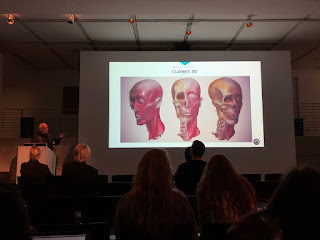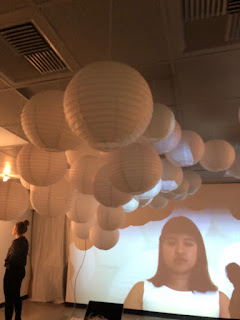Week 3
An interesting theme I found among throughout the readings from Walter Benjamin and Douglas Davis was the idea of how advancing technology was changing our relationship to art. According to Benjamin, technology shifted our dependance on original work to reproducible work, which changed the function of art to "begins to be based on another practice—politics." Davis found that technology influenced art in a different manner, stating "By finding the means to transfer my early video works from analog to digital media, I can contemplate revisions on my computer that will allow me to change my mind, two decades later, about points where I erred long ago. This allows me to produce a 'post-original original.'" In the context of knowledge production, Davis saw this transition to digital media as a chance to continue producing knowledge (in the form of artwork) through expanding on work he did long in the past.
I also found the comparison of magicians and surgeons to painters and photographers quite fascinating. The idea that photographers are able to more deeply uncover a subject shows how technology has again enabled knowledge production. Because of their deeper understanding of a subject, photographers can explore their own work in a more complex level, and display those complex findings with the public thus spreading knowledge.
“The Vigil Network: West Fork Muddy Creek Negatives for Roll 2, Frames 4-13.” USGS, 15 Jan. 2013, wwwpaztcn.wr.usgs.gov/vigil/west_muddy_creek/negatives.html.
McKay, Dawn Rosenberg. “How You Can Become a Professional Photographer.” The Balance, 19 Apr. 2017, www.thebalance.com/photographer-525676.
Benjamin, Walter. The Work of Art in the Age of Mechanical Reproduction. Prism Key Press, 2010.
Davis, Douglas. “The Work of Art in the Age of Digital Reproduction (An Evolving Thesis: 1991-1995).” Leonardo, vol. 28, no. 5, 1995, pp. 381–385., doi:10.2307/1576221.
“Alchemy.” Guggenheim, 13 Apr. 2018, www.guggenheim.org/artwork/3482.
 |
| Photo negatives make the need for having "originals" as every copy you make with the negative is the same. |
 |
| Jackson Pollock's Alchemy; an example of art where the original matters as there only exists one painting. |
I also found the comparison of magicians and surgeons to painters and photographers quite fascinating. The idea that photographers are able to more deeply uncover a subject shows how technology has again enabled knowledge production. Because of their deeper understanding of a subject, photographers can explore their own work in a more complex level, and display those complex findings with the public thus spreading knowledge.
 |
| A photographer |
Sources
“The Vigil Network: West Fork Muddy Creek Negatives for Roll 2, Frames 4-13.” USGS, 15 Jan. 2013, wwwpaztcn.wr.usgs.gov/vigil/west_muddy_creek/negatives.html.
McKay, Dawn Rosenberg. “How You Can Become a Professional Photographer.” The Balance, 19 Apr. 2017, www.thebalance.com/photographer-525676.
Benjamin, Walter. The Work of Art in the Age of Mechanical Reproduction. Prism Key Press, 2010.
Davis, Douglas. “The Work of Art in the Age of Digital Reproduction (An Evolving Thesis: 1991-1995).” Leonardo, vol. 28, no. 5, 1995, pp. 381–385., doi:10.2307/1576221.
“Alchemy.” Guggenheim, 13 Apr. 2018, www.guggenheim.org/artwork/3482.



Your use of the negative photos to demonstrate your point was very interesting and impressive! Ultimately, I would have to side with Davis on the idea that the mechanization and digitization of art has a net benefit to our understanding and utilization of art. With that being said, I just want to ask if sometimes, photography as an art form can lead us to undervalue some of the traditional art forms such as painting and sculpting, simply because it's much easier to get into photography than it is to start becoming a painter. Just some food for thought.
ReplyDeleteI really enjoyed your insights into the differences between Walter Benjamin and Douglas Davis. I really like how Davis believed the transition to digital media would allow him to expand his artistic creations and overall become a better artist. I also think its interesting how negatives allow artists to mass produce their work. I wonder if traditional painters, like Picasso, would have enjoyed this ability to share their artwork on a grander scale, or perhaps thought it was against the idea of "original" and creativity to have so much of the same art in the world. I also think the comparison of artists to surgeons or magicians is a deeper expansion on the reading. I think the idea that surgery may one day be an automated robotic job is thrilling and terrifying, and I would love to hear your thoughts on that in your next blog.
ReplyDelete